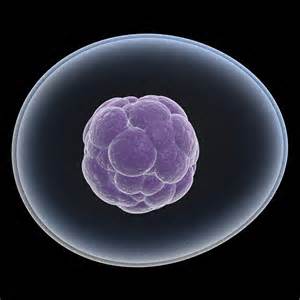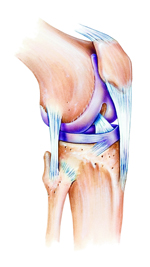What are the Differences Between Prolotherapy, Stem Cell Therapy, and PRP?
 Metaphors are a great way to help make sense of many ideas. In the spirit of metaphorical explanations, we at Meier Orthopedic Sports Medicine (MOSM) in Beverly Hills tried to sum up the differences among some of the pillars of regenerative medicine – stem cell therapy, platelet-rich plasma (PRP), and prolotherapy.
Metaphors are a great way to help make sense of many ideas. In the spirit of metaphorical explanations, we at Meier Orthopedic Sports Medicine (MOSM) in Beverly Hills tried to sum up the differences among some of the pillars of regenerative medicine – stem cell therapy, platelet-rich plasma (PRP), and prolotherapy.
First, we tried the garden metaphor, which fit nicely for PRP, but was a stretch for stem cell therapy and prolotherapy. We also tried the general contractor approach, which we discovered had already been used, but had some room for improvement. So, although these pillars of regenerative medicine are so fascinating, describing them warrants a head-on approach, and we are going to try and give our own spin to the GC metaphor and broaden the scope to that of a home.
Beverly Hills orthopedic surgeon and regenerative medicine expert Dr. Steven Meier of MOSM informally explains how to make sense of the differences and similarities among these pillars of regenerative medicine.
Understanding the Three Main Pillars of Regenerative Medicine
Regenerative injection therapy for musculoskeletal conditions enables your body to regenerate components that keep your body functioning properly. Typically, an abatement of pain results, as well. stem cell therapy, PRP, and prolotherapy are cutting-edge regenerative methods that can help address several common conditions faced by patients: arthritis, hamstring tears, degenerative disc disease, and much more. The use of these methods is no longer confined to professional athletes. The general public is getting in the game now – worldwide.
To find out if you are a good candidate for stem cell therapy, PRP, or prolotherapy, contact Meier Orthopedic Sports Medicine at 310-777-7845 to schedule a consultation. Dr. Meier and his team offer these innovative regenerative medicine techniques for diverse orthopedic problems, including chronic injuries that have not improved with conventional treatments, and as recovery enhancement for surgical procedures.
Your Body, Your Home
Think of your body as a house that is constantly receiving some sort of maintenance – workers are mowing the lawn, pulling weeds, exterminating, spackling cracks in walls, fixing the plumbing, etc… Then, one day, a load-bearing wall buckles. The plaster and dry wall has worn away and the frame has buckled. In order to keep other parts of the house from being affected, you need help to repair.
Regenerative Medicine Therapy – Your Construction Team
Stem Cell Therapy – The General Contractors
 Stem cell therapy can be likened to sending in a team of general contractors (GC) to get the job done. Each GC has the blueprints with the information needed to get each segment of the repair job done, and each GC can redirect crew already working in nearby areas of the house to come and learn specific tasks and fix the buckled wall. The GC will pass on the blueprints to crew (nearby cells), giving them the required information to complete each job.
Stem cell therapy can be likened to sending in a team of general contractors (GC) to get the job done. Each GC has the blueprints with the information needed to get each segment of the repair job done, and each GC can redirect crew already working in nearby areas of the house to come and learn specific tasks and fix the buckled wall. The GC will pass on the blueprints to crew (nearby cells), giving them the required information to complete each job.
Stem cells use paracrine signaling to achieve this communication. Stem cells secrete chemical factors that are like the blueprints or instructions required to do a job. Nearby cells have surface receptors that receive the necessary blueprint information, or chemical factors. They are now equipped with the necessary programming to address the necessary task.
There are three different types of stem cells, two of which can currently be used for diverse rehabilitative purposes, and a third is enjoying its first applied success as of March 20171:
- Non-Embryonic “Somatic,” or “Adult” Stem Cells are cells harvested from adult tissues2
- Embryonic Stem Cells are cells from (mostly) in vitro created embryos2
- Induced Pluripotent Stem Cells (iPSCs) are cells that can be induced to behave as stem cells by programming them in their nascent or embryonic state2
Currently, MOSM utilizes adult stem cells that are harvested from the patient’s own body (autogenous).
Platelet-Rich Plasma – The Subcontractors
PRP or platelet-rich plasma can be used in conjunction with stem cell treatment to give a boost to stem cell processes, or it can be used as a stand-alone treatment. PRP acts as fuel for the stem cells. Sometimes, after a stem cell treatment, Dr. Meier will inject PRP at one month intervals to “recharge” the stem cells which can remain active for 8-12 months. For PRP, the patient’s own blood is drawn and spun in a centrifuge to separate the plasma. This plasma is now concentrated with platelets. This platelet-rich plasma is packed with at least seven growth factors – epidermal growth factor, platelet-derived growth factor, transforming growth factor-beta, vascular endothelial growth factor (VEGF), fibroblast growth factor, insulin-like growth factor, and keratinocyte growth factor3.
PRP can be likened to subcontractors. If PRP is used as a standalone, it would be as though you pulled subcontractors who are doing other maintenance jobs in other parts of your house off their normal tasks. This amassed group of skilled workers would then focus their areas of expertise on fixing the buckled load-bearing wall. This crew wouldn’t need the blueprints from the GCs (stem cells), because they all have specific skill sets and each knows how to execute the tasks required of them. Yet, as mentioned, in the presence of stem cells (or GCs, if you will), they can still jump in and do their jobs and work together.
Prolotherapy – The Inspector

Prolotherapy can be likened to sending an irritating inspector into the space that needs attention. His irritation is sensed by the workers in other areas of the house, so they respond to the area and begin repairing the buckled wall.
The term “prolotherapy” is short for “proliferative therapy” which involves the stimulation of a proliferative or regenerative process in the body. The technique of prolotherapy involves administering multiple injections of a dextrose-saline solution in specific concentration into or around the tissue requiring treatment. Prolotherapy can be used to treat musculoskeletal disorders in two main ways. One is to inject injured connective tissue structures like ligaments and tendons to induce healing. As injured or degenerated and lax supportive structures allow joint instability that causes painful inflammation, healing of these structures leads to retensioning and reduction of joint instability, allowing the painful inflammation to subside. Another way to use prolotherapy is to inject concentrated dextrose solution inside joints to reduce painful inflammation from bursitis, tendinosis or damaged cartilage.
Prolotherapy works in several different ways. Prolotherapy has been demonstrated to induce the production of collagen. Collagen makes up the substance of supportive ligaments much in the way of fibers in a rope or cable. Collagen also provides the framework to support cartilage just like the rebar in buildings.
Additionally, prolotherapy stimulates the production of glycosaminoglycans and proteoglycans, which are the building blocks of cartilage, providing its compressive and cushioning properties. Also, very importantly, dextrose prolotherapy solutions have been shown to naturally decrease neurogenic inflammation, a common source of pain in many musculoskeletal conditions.
Remodeling Regenerative Medicine’s Reputation
When we all started hearing about stem cells and regenerative medicine, controversy ensued – whether it was religious belief or disputes of efficacy, everyone seemed to be weighing in. While there may always be parts of new medicine that instigate controversy, regenerative medicine has logged some more time and the increased volume in studies is starting to add some really good color to our deeper understanding of this exciting frontier.
To learn more about regenerative medicine and how it may benefit those suffering from orthopedic conditions, please contact Meier Orthopedic Sports Medicine to schedule a consultation at our Beverly Hills office. Dr. Meier specializes in providing the most comprehensive and progressive treatments available, from therapeutic techniques and regenerative medicine to minimally-invasive surgery.
References:
- http://www.sciencemag.org/news/2017/03/cutting-edge-stem-cell-therapy-proves-safe-will-it-ever-be-effective
- https://stemcells.nih.gov/info/basics/4.htm
- Van Pham et al. Stem Cell Research & Therapy 2013, 4:91
http://stemcellres.com/content/4/4/91
Next, read our blog, If Laird Hamilton Can Do It, So Can You…But Would You Want To?